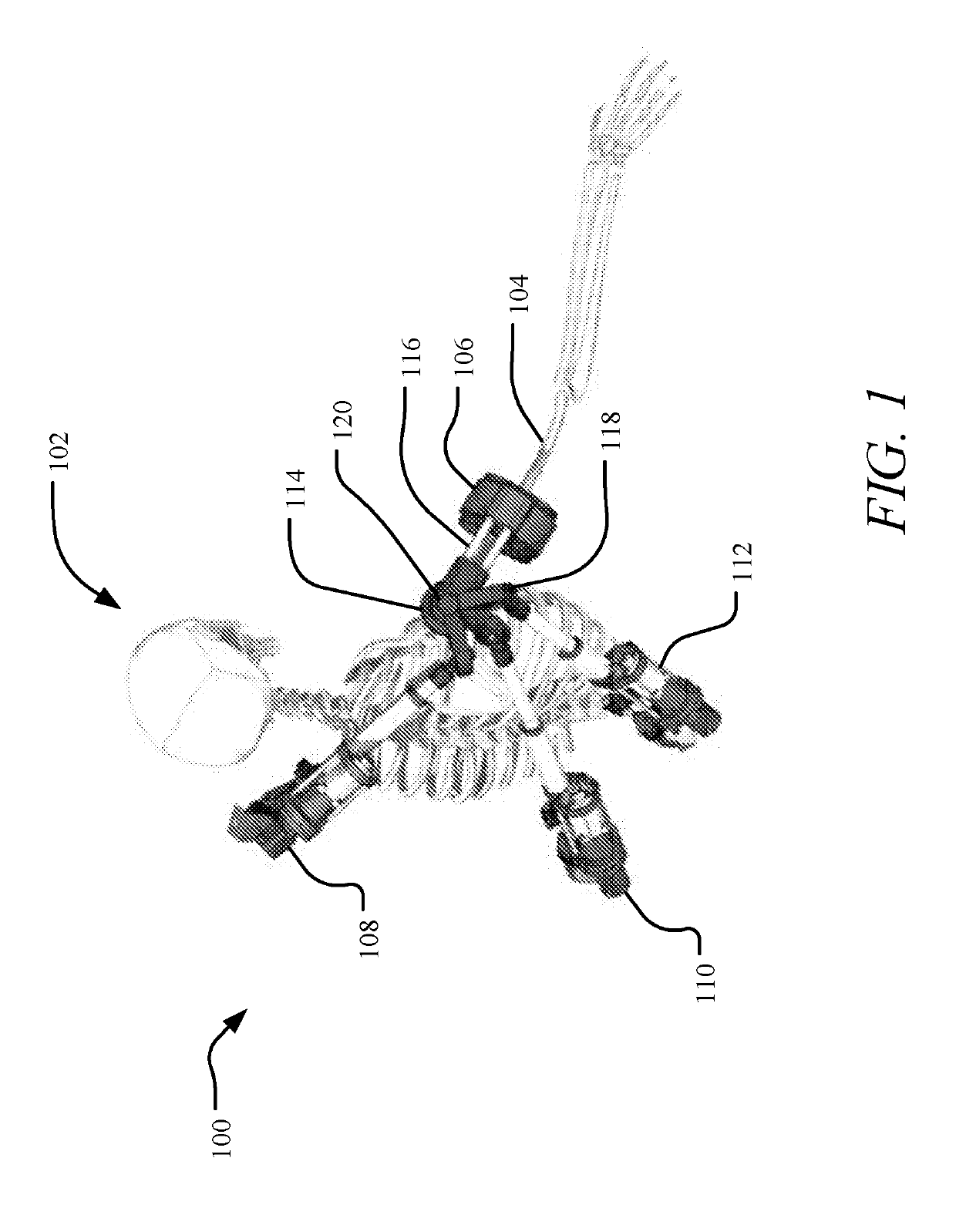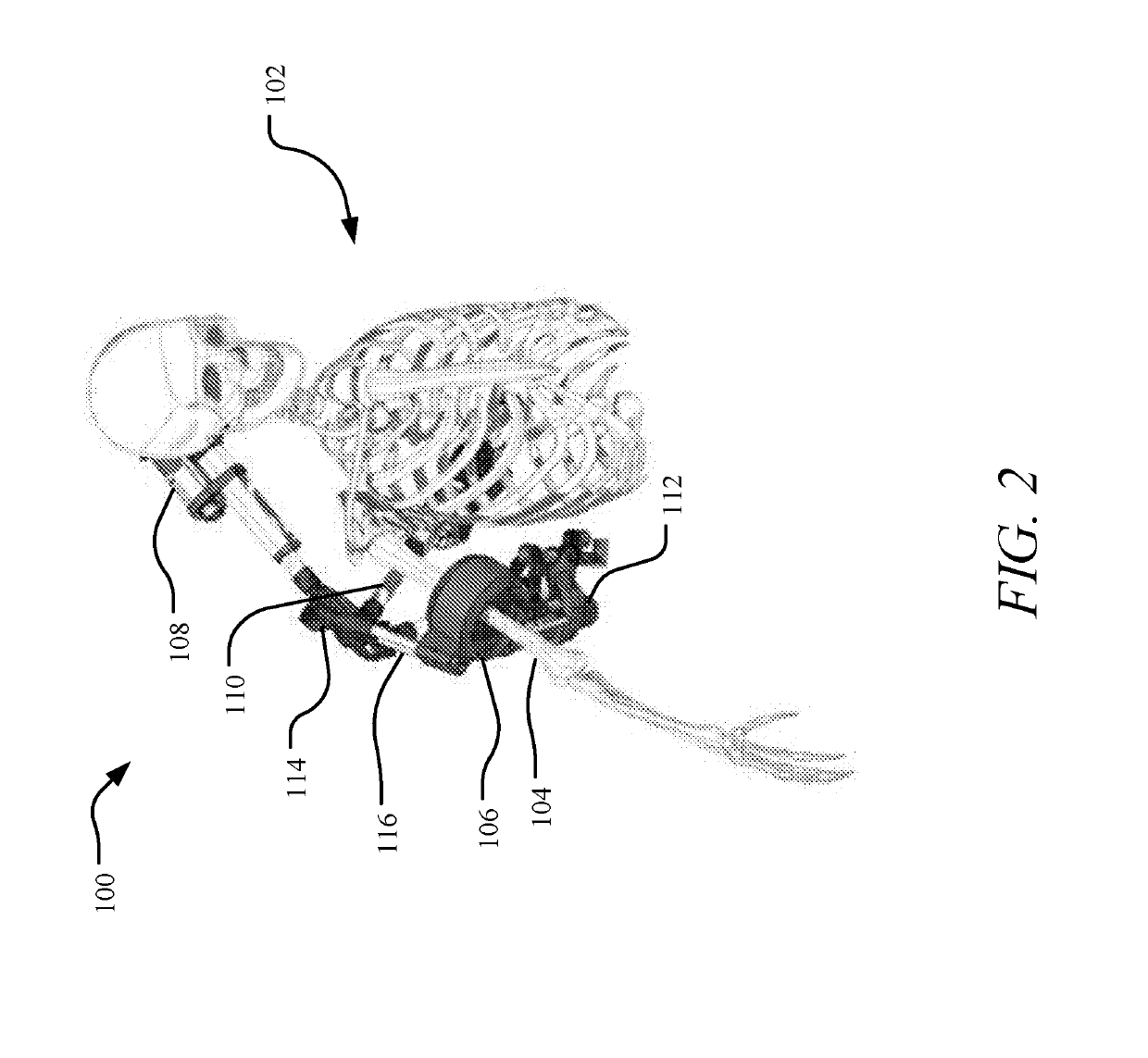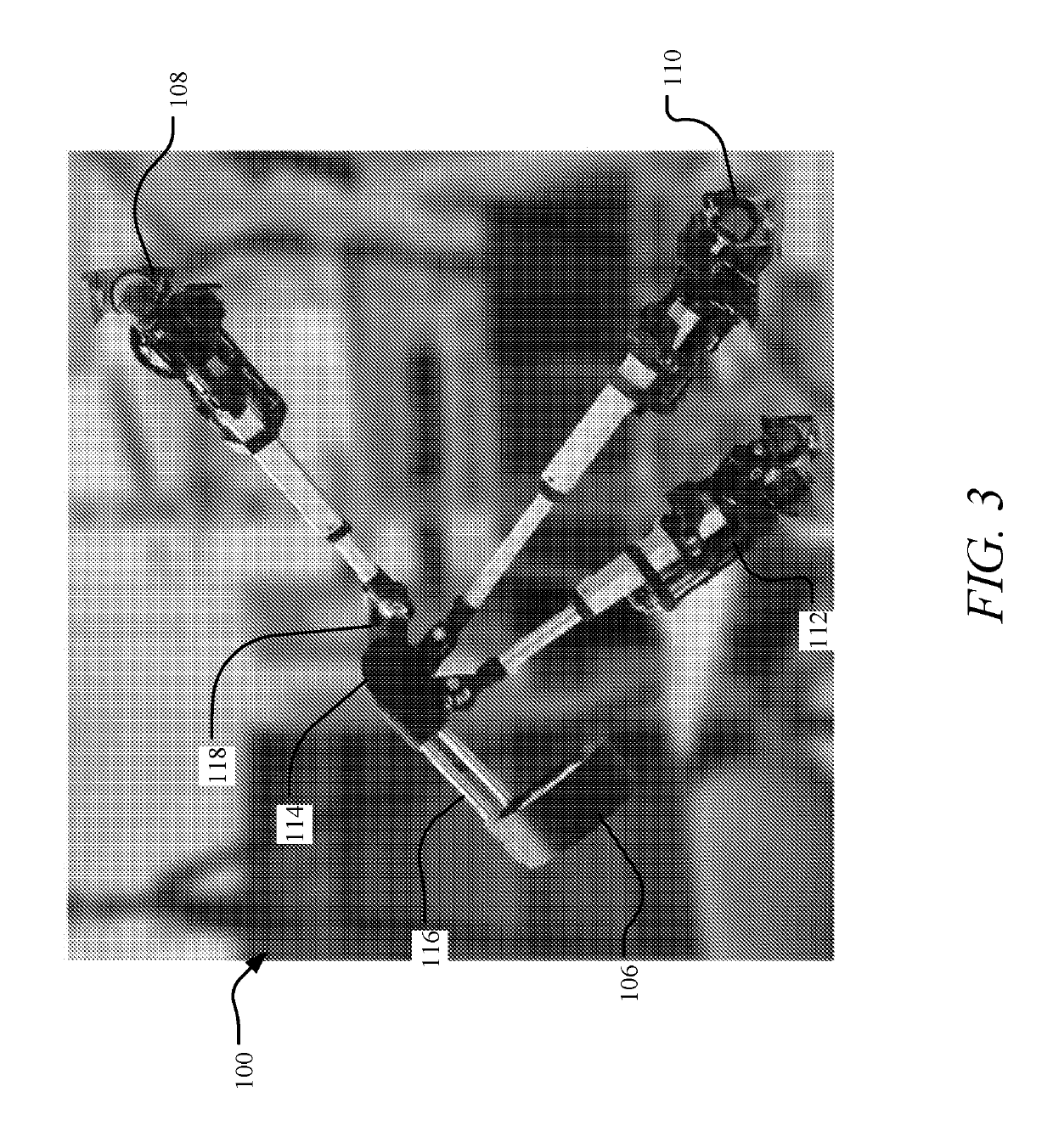Mechanism for alleviating the effects of joint misalignment between users and wearable robots
- Summary
- Abstract
- Description
- Claims
- Application Information
AI Technical Summary
Benefits of technology
Problems solved by technology
Method used
Image
Examples
Embodiment Construction
[0026]Aspects of the present disclose generally relate to a shoulder exoskeleton for a user having a spherical parallel manipulator (SPM) and a passive slip mechanism. In one example implementation, the SPM consists of three parallel linear actuators connected to a base coupled to the user. Each actuator has three degrees-of-freedom (DoF). Two of the DoF are rotational (roll and pitch) and one is translational (stroke). The roll of each actuator is defined to rotate about a vector connecting a base mounting point of the actuator to a center of rotation of a shoulder of the user. The roll is not directly constrained but rather set by synergistic movements of all three actuators. The pitch and length of each actuator are mechanically coupled, such that a workspace is a spherical surface centered about the shoulder of the user. Each actuator may be connected to the base by a 3-DoF tie-rod joint. The base is connected to an arm of the user by a 2-DoF passive joint that allows for 1-DoF ...
PUM
 Login to View More
Login to View More Abstract
Description
Claims
Application Information
 Login to View More
Login to View More - R&D
- Intellectual Property
- Life Sciences
- Materials
- Tech Scout
- Unparalleled Data Quality
- Higher Quality Content
- 60% Fewer Hallucinations
Browse by: Latest US Patents, China's latest patents, Technical Efficacy Thesaurus, Application Domain, Technology Topic, Popular Technical Reports.
© 2025 PatSnap. All rights reserved.Legal|Privacy policy|Modern Slavery Act Transparency Statement|Sitemap|About US| Contact US: help@patsnap.com



